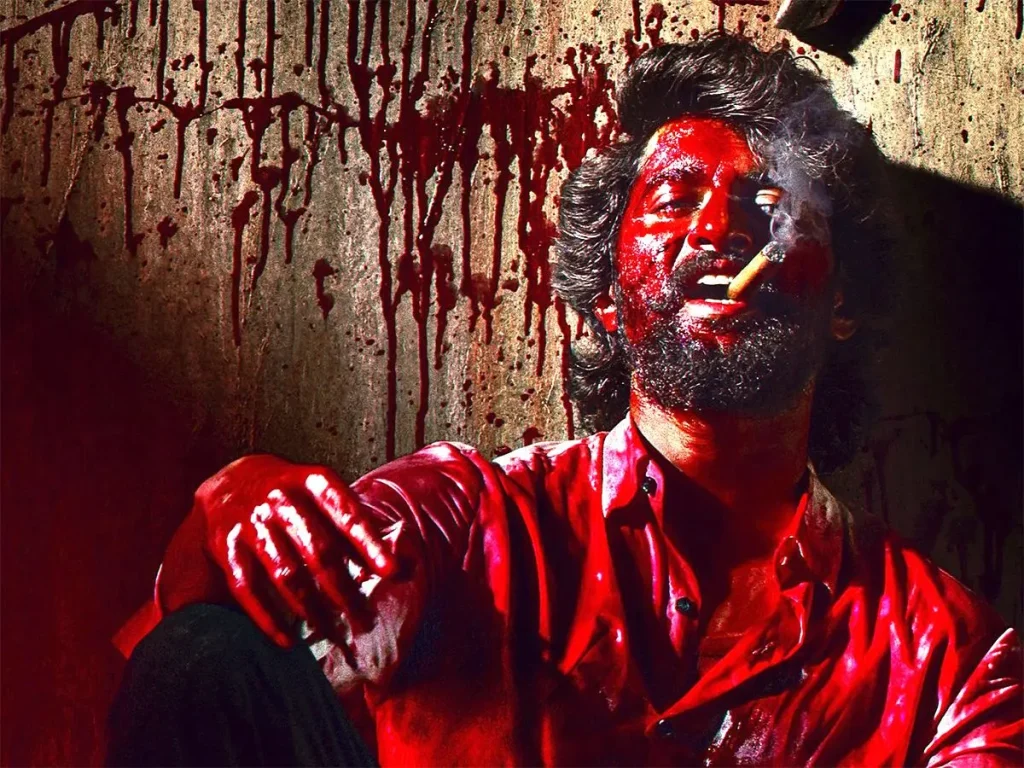- Genre: Crime Thriller, Action
- Director: Sailesh Kolanu
- Cast: Nani, Srinidhi Shetty, Rao Ramesh, Brahmaji, Maganti Srinath
- Duration: 2 hours 36 minutes
- Rating: ★★★☆☆ (3/5)
- Age Rating: A (Adults Only)
HIT: The Third Case marks the latest entry in the HIT (Homicide Intervention Team) universe created by director Sailesh Kolanu. After the success of HIT: The First Case and HIT: The Second Case, this third installment aims to expand the cinematic universe with higher stakes, deeper psychological themes, and a much darker tone. This time, Nani headlines the story as an emotionally scarred, hyper-intense police officer who is both haunted and hardened by his past. Unlike its predecessors, the film leans into stylized action while maintaining a backbone of investigative tension.
Plot Overview
The story centers on Arjun Sarkar (Nani), a senior police officer introduced in a rather unconventional situation: he is under arrest. The film uses a non-linear narrative to unravel the events leading to this point. Arjun is drawn into a complex case involving 13 gruesome murders that take place across India in a synchronized fashion. These killings aren’t random—they are executed with clinical precision, indicating an organized group with a deeper agenda.
As Arjun begins to investigate, he uncovers connections between the victims and a history of hidden abuse, corruption, and trauma. The case not only tests his policing abilities but also forces him to confront his own inner demons and past trauma. As the plot unfolds, viewers are taken on a psychological journey through the motivations of both killer and cop, culminating in an emotionally charged and morally complex climax.
Performance Analysis
Nani delivers one of his most mature performances to date. This isn’t the charming or witty protagonist audiences have come to associate with him. As Arjun Sarkar, Nani presents a cold, calculative, and emotionally distant officer driven by a relentless sense of justice. He plays the role with controlled intensity, especially in scenes of confrontation and inner turmoil, offering a layered character portrayal.
Srinidhi Shetty, making her Telugu debut, does not have extensive screen time, but brings authenticity to her role. She serves more as an emotional anchor for Arjun rather than a plot-driving character.
Rao Ramesh, Brahmaji, and Maganti Srinath all contribute to fleshing out the procedural and bureaucratic framework around Arjun’s investigation. While none of them steal scenes, they lend credibility to the world the film builds.
Direction and Screenplay
Sailesh Kolanu’s directorial approach takes a noticeable turn with this third installment. While the first two entries emphasized detailed police work and mystery, this one is more action-forward and character-driven. Kolanu attempts to blend crime thriller elements with psychological drama and succeeds partially. The screenplay is ambitious and touches upon themes like institutional failure, vigilante justice, and personal trauma, but occasionally falters in pacing—particularly in the first half, which drags as it sets up its complex premise.
Cinematography and Technical Aspects
Sanu John Varghese’s cinematography is visually striking. The use of dim lighting, shadows, and handheld camera work during action sequences adds a gritty realism that fits the film’s mood. The narrative tone is dark, both literally and thematically, enhancing the psychological undertones.
The action choreography is intense yet grounded. Unlike high-octane masala action films, the fight scenes here are raw and character-driven, which keeps them believable.
Mickey J Meyer’s background score is atmospheric, helping build tension during investigative scenes while remaining restrained enough to not overpower quieter, more introspective moments. The soundtrack is minimalistic but effective.
What Worked
- Nani’s committed performance gives the film a strong emotional and dramatic core.
- The second half, especially the climax, is packed with tension and well-paced twists that make the resolution satisfying.
- Production quality and technical finesse, particularly in cinematography and sound design, elevate the viewing experience.
- The shift in tone to a psychological action-thriller gives the franchise a fresh feel, avoiding formulaic repetition.
What Didn’t Work
- The first half feels stretched, with a slower narrative progression that may cause disengagement.
- The lack of a strong emotional arc for secondary characters weakens their impact on the overall story.
- Fans expecting a tight, procedural mystery might be disappointed by the emphasis on stylized violence and personal vendetta.
- Some plot developments feel undercooked or too convenient, especially regarding how quickly certain leads are resolved.
Final Verdict
HIT: The Third Case is a bold evolution for the HIT franchise, with Nani proving his versatility in a brooding, intense role. Though the film stumbles in its pacing and shifts away from the procedural strength of the earlier entries, it offers enough depth, action, and character drama to make it a compelling thriller. It may not be the most refined entry in the series, but it certainly is the most daring.
Rating: ★★★☆☆ (3/5)

